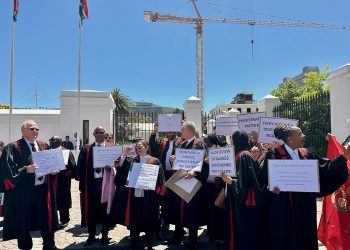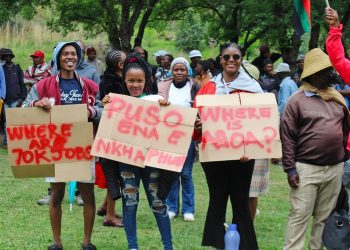In Tanzania, something snapped this year. Protests followed the 29 October 2025 elections. They are unprecedented in their scale, national breadth and political content since the country’s independence in 1961.
But the repression unleashed by newly re-elected President Samia Suluhu Hassan has also been unprecedented. She has gone further than her autocratic predecessors in closing off the political space and silencing opposition figures.
By putting her main rival Tundu Lissu on trial for treason and barring others from contesting the presidency, Hassan has crossed autocratic thresholds that other leaders have not. Activists have been arrested, brutalised or disappeared.
The protests spread across a series of major cities and towns in Tanzania. However, an internet blackout created a fog of war in which details are difficult to ascertain.
I am an assistant professor of politics at the University of Sussex. I have dedicated 11 years to studying Tanzania’s anti-authoritarian struggle.
Amateur and professional coverage found its way through the internet blackout. What I see in this footage is anger and tragedy running through these protests, and the struggle of the anti-authoritarian movement at large. However, at least fleetingly, there has been hope as well.
The anger is directed at the regime. It simultaneously focuses on Tanzanians’ material circumstances and what they see as the political sources of those circumstances. The hope comes from a changing sense of what is possible – the regime long seemed invulnerable. The protests have thrown its authority into doubt.
The protests
The immediate trigger for the public protests was the sham general election.
The protests turned violent. Protesters set police stations and other buildings ablaze, hijacked police and ruling party vehicles, and ransacked polling stations.
The regime responded with force. Police met civilians with gunfire and teargas.
Two people were reportedly killed and several others injured on election day. Media sources, who include opposition leaders and diplomats in Tanzania, put the number of those killed over three days of protests in the hundreds.
The triggers
Tanzanians have plenty of reasons to be angry at the government.
The causes are many. About 72% of citizens work as street vendors, motorcycle taxi drivers and in other informal jobs. Yet Hassan’s neo-liberal government suppresses the demands of these constituencies.
Under Hassan’s rule, young people in particular have been neglected. Tanzania is a youthful country, with more than half of the population below the age of 18. They have especially suffered from Tanzania’s under-investment in education and health relative to its regional neighbours.
While Hassan has presided over an economy that has continued to steadily grow, it has remained deeply unequal. More than 66% of Tanzanians remain poor.
The anger is not just about policy, but politics too.
The ruling party, Chama Cha Mapinduzi (CCM), has deep roots. It has ruled Tanzania in one form or another since the country’s independence from Britain in 1961. For years, CCM has used autocratic measures to tip the playing field in its favour.
Since 2014, under former president John Pombe Magufuli, it has been steadily extending those measures. By 2020, the playing field had become all but closed.
Protesters are directing their anger against the regime. They have torn down posters of Hassan. They are demanding constitutional reform, a truly independent electoral commission, and free and fair elections.
Unprecedented protests
These people’s-power protesters, in short, are defining their cause in terms of democracy.
There is no precedent for protests like this in Tanzania. There have been many vigorous protests over the year. However, they have been localised protests against the forced eviction of the Maasai from ancestral lands, extraction by transnational gold mining corporations and exclusion of the public from the proceeds of natural gas extraction.
In semi-autonomous archipelago Zanzibar, electoral manipulation has been consistently protested for three decades,
Yet, Zanzibar aside, protests against the regime itself have always remained anaemic, until now.
It is not for want of trying.
The main opposition party Chadema has steadily turned to protest since 2016. It called for nationwide protests in the wake of the apparent rigging of the 2020 elections. Yet, few turned out to join them.
Chadema, and the opposition at large, has struggled in the face of a violent state apparatus to draw protesters beyond a cadre of committed activists to its banner. Until now.
What’s different
Until days ago, the sort of protests unfolding across Tanzania seemed like a fool’s hope. The CCM regime, and its security apparatus, would never allow them. Protesters were arrested, brutalised, abducted or killed. Resistance, it seemed, was futile.
The 2025 protests have thrown all of this into doubt.
As political scientists Adam Branch and Zachariah Mamphilly observe, in protests, what seems possible can change profoundly and suddenly. Whenever protests gather momentum, the dynamics of their formation and repression change. Security personnel can seem hopelessly outnumbered. Protests can seem unassailably large.
In this context, protesters have created spaces in which they – rather than the regime – rule, at least temporarily. The footage of protesters making off with ballot boxes, tearing down posters and saying the previously unsayable shows moments that have an air of emancipation.
The exuberance may not last. Tanzania’s regime has not endured for 64 years for nothing. If the crackdown hardens, and the death toll climbs, the streets may clear quickly. If, in contrast, the police are unable to contain the protests and the military refuse to support them, they may quickly lose control.
Whatever follows, Tanzania has changed almost overnight. One way or another, the change is almost certainly not yet over.












